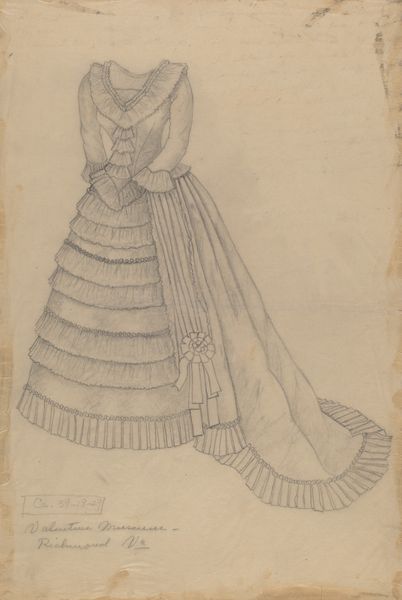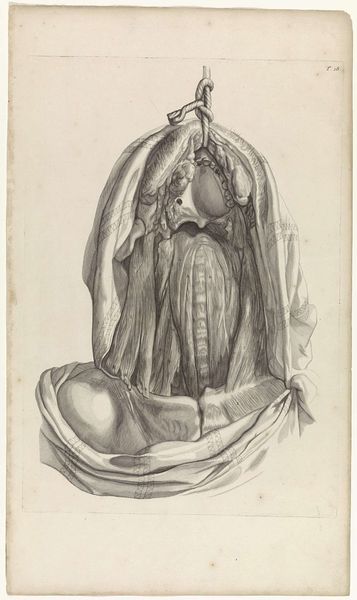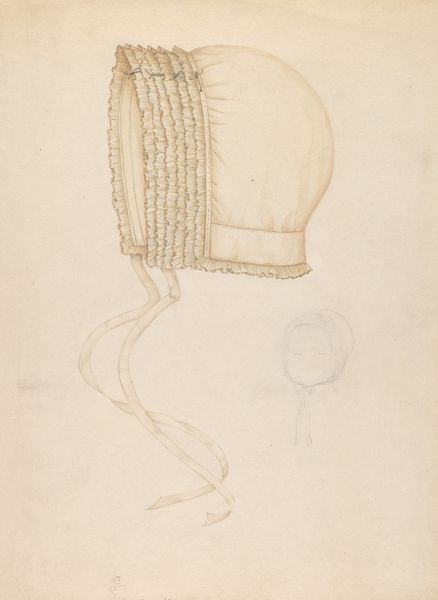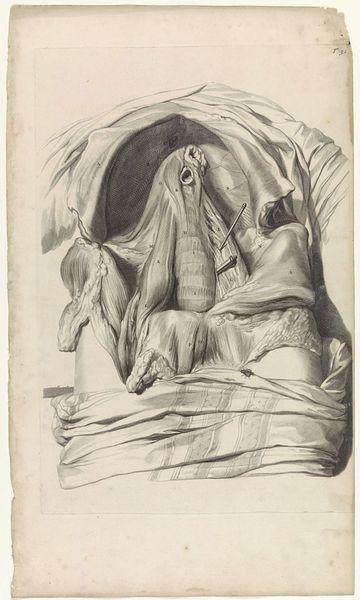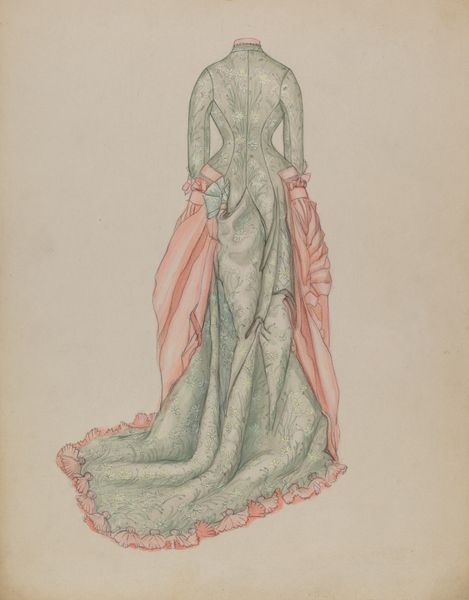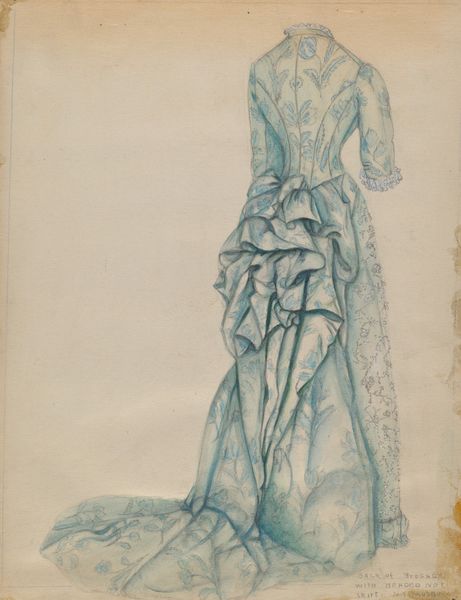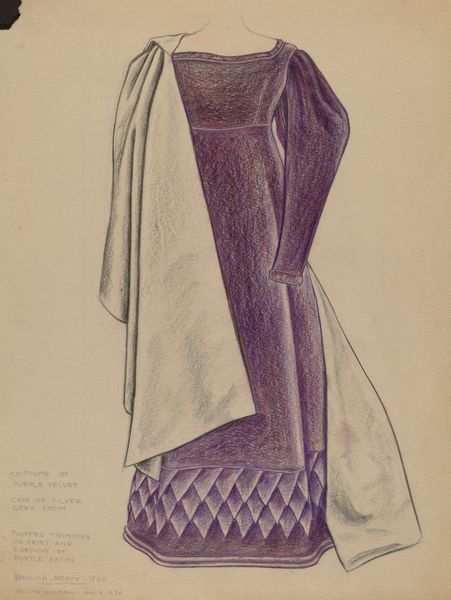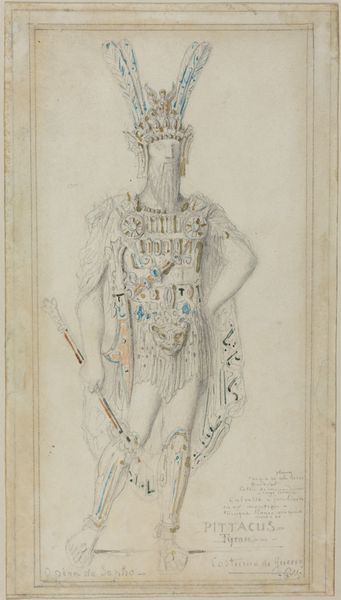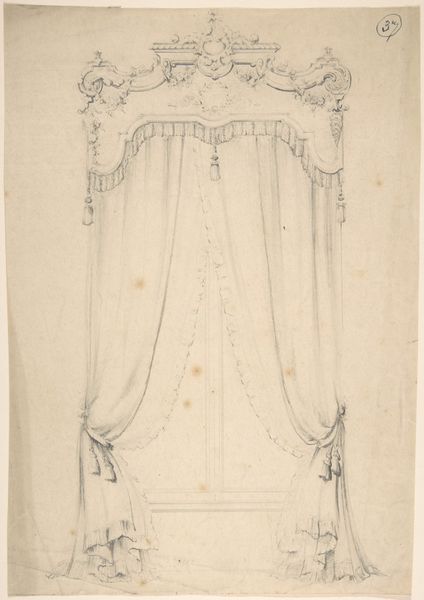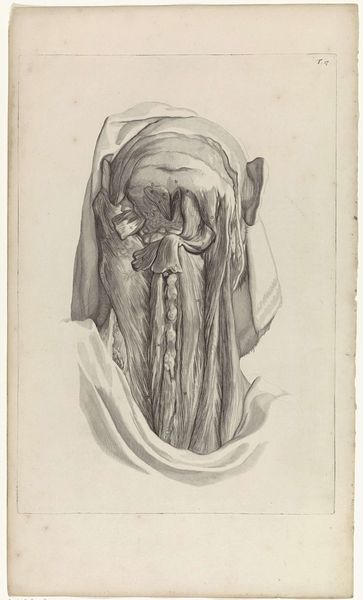
drawing, print, paper, pencil
#
drawing
# print
#
paper
#
coloured pencil
#
pencil
#
decorative-art
Dimensions: sheet: 13 3/8 x 9 3/4 in. (33.9 x 24.7 cm)
Copyright: Public Domain
Curator: This drawing, entitled "Design for Bed and Canopy," comes to us from the workshop of Charles Hindley and Sons, sometime between 1841 and 1884. It is now housed at the Metropolitan Museum of Art, created using pencil and coloured pencil on paper. What strikes you about it initially? Editor: An interesting choice for an audio guide! It's surprisingly...delicate. The linear quality gives it a tentative feel, almost as if the bed is about to evaporate. The drapery feels heavy in form yet soft. Curator: Yes, there’s a beautiful tension. The bed itself, with its canopy, represents not just sleep but status, protection, even sanctuary. Historically, the bed chamber served as a stage for birth, death, and important social rituals. What sort of feelings does this visual arrangement stir for you? Editor: Isolation comes to mind, primarily due to its monochromatic appearance. One can't see it ever coming to life when deprived of vibrance and color, which makes me wonder about Hindley and Sons' intentional decisions and underlying themes that guided their artistic work and creativity. Curator: The choice of neutral tones lends the design a timeless, almost ethereal quality. The canopy, elaborated by soft lines, becomes a sort of cloud, a numinous protective sphere. Perhaps Hindley and Sons were evoking a desire for peace and tranquility amidst the hustle of Victorian life. Editor: The meticulous depiction of the tassels and pleats, coupled with the ghostly lightness, reminds me of the impermanence of material wealth. Everything seems fragile. Curator: Exactly! These objects, so carefully rendered, are ultimately transient. The drawing itself becomes a meditation on the cyclical nature of creation and decay. A bed, a place of rest, as a stage for our fleeting existence. Editor: It definitely elevates a seemingly mundane object to the level of the symbolic. Looking at it again, the meticulous detailing almost anticipates photography—a craving for absolute realism. Curator: A fitting end-note: an artistic embrace of mortality and impermanence with just humble tools—pencils and paper. It is evocative and makes me think more carefully about its presence as art and historical value. Editor: A reminder that beauty can be found even in the most understated forms and in humble creations of everyday living. It seems to capture life in the early Victorian Age!
Comments
No comments
Be the first to comment and join the conversation on the ultimate creative platform.
